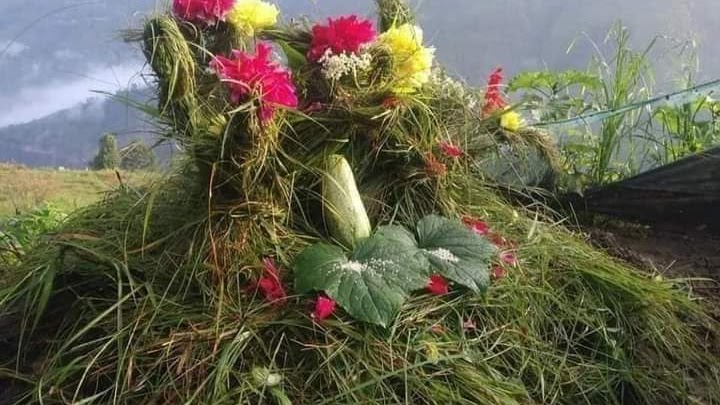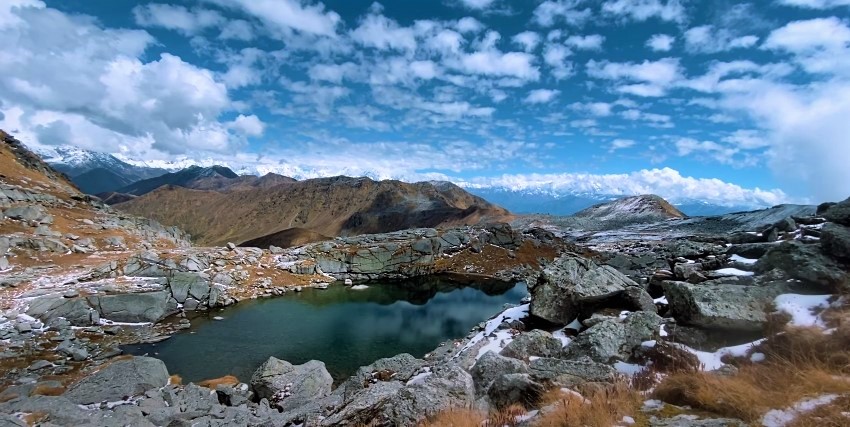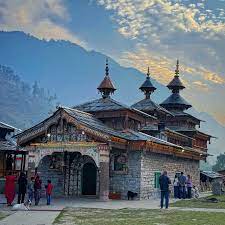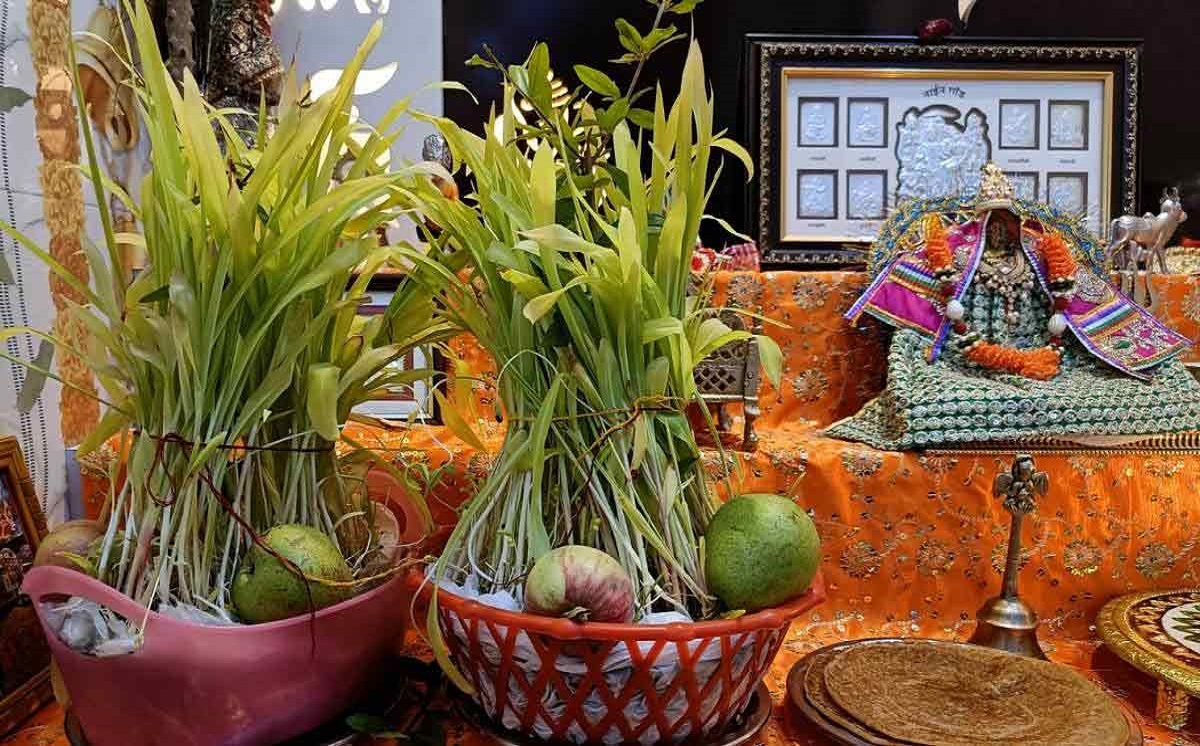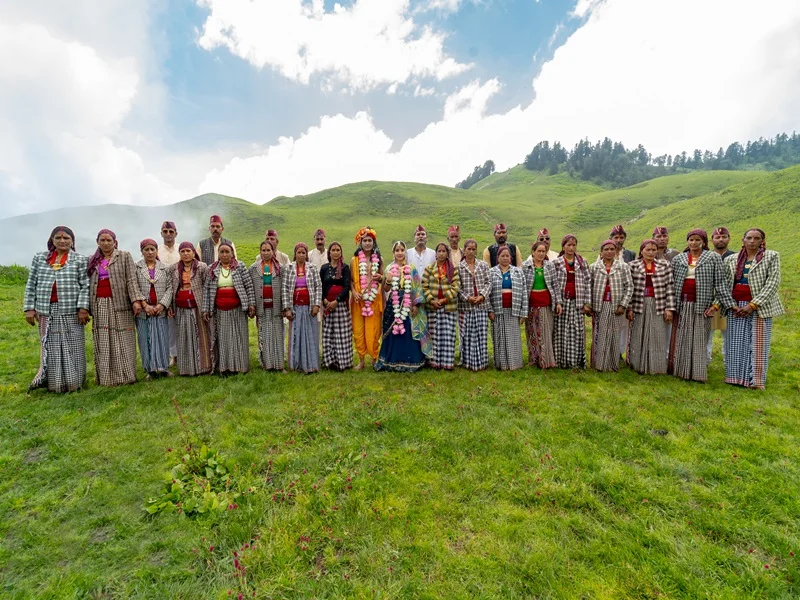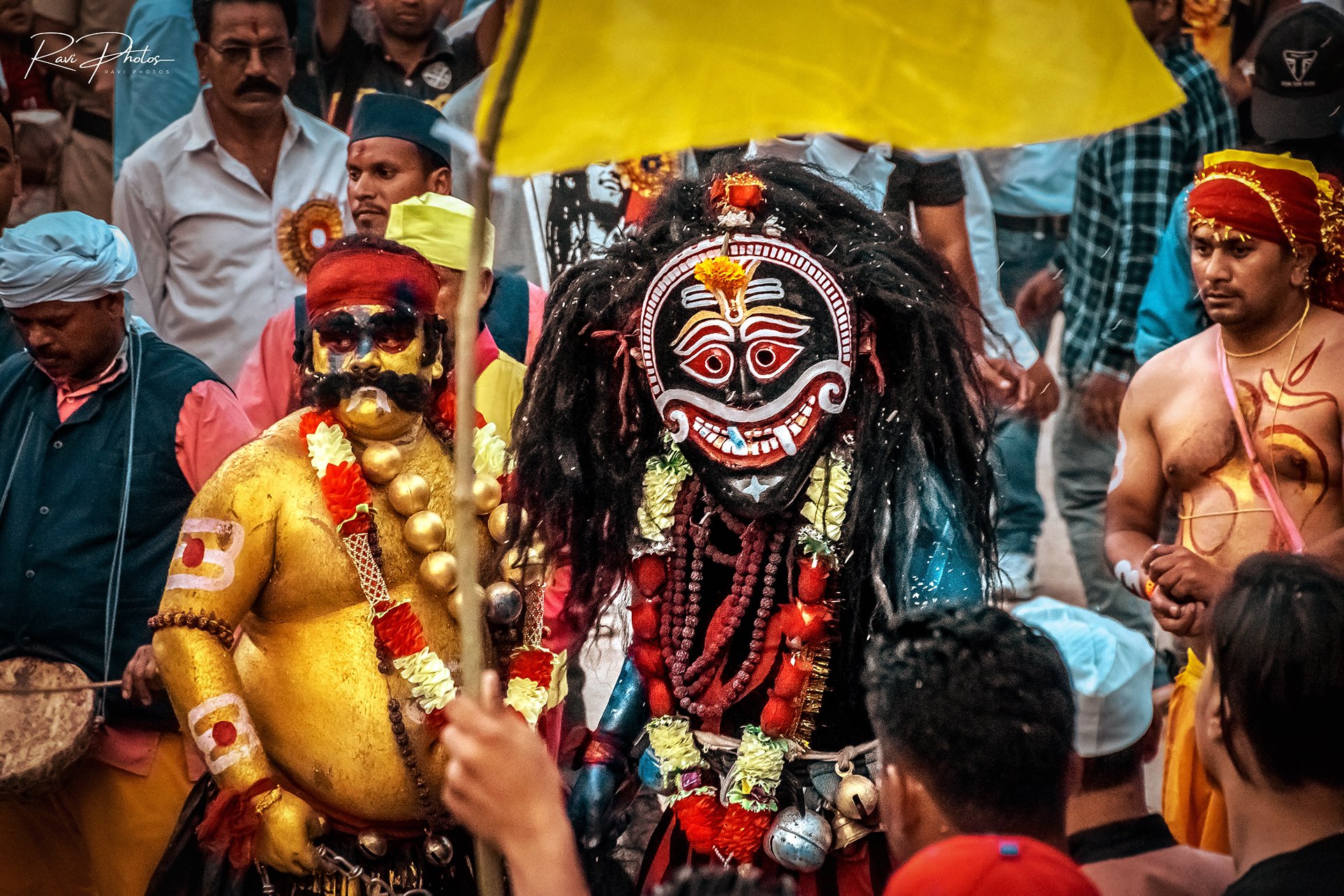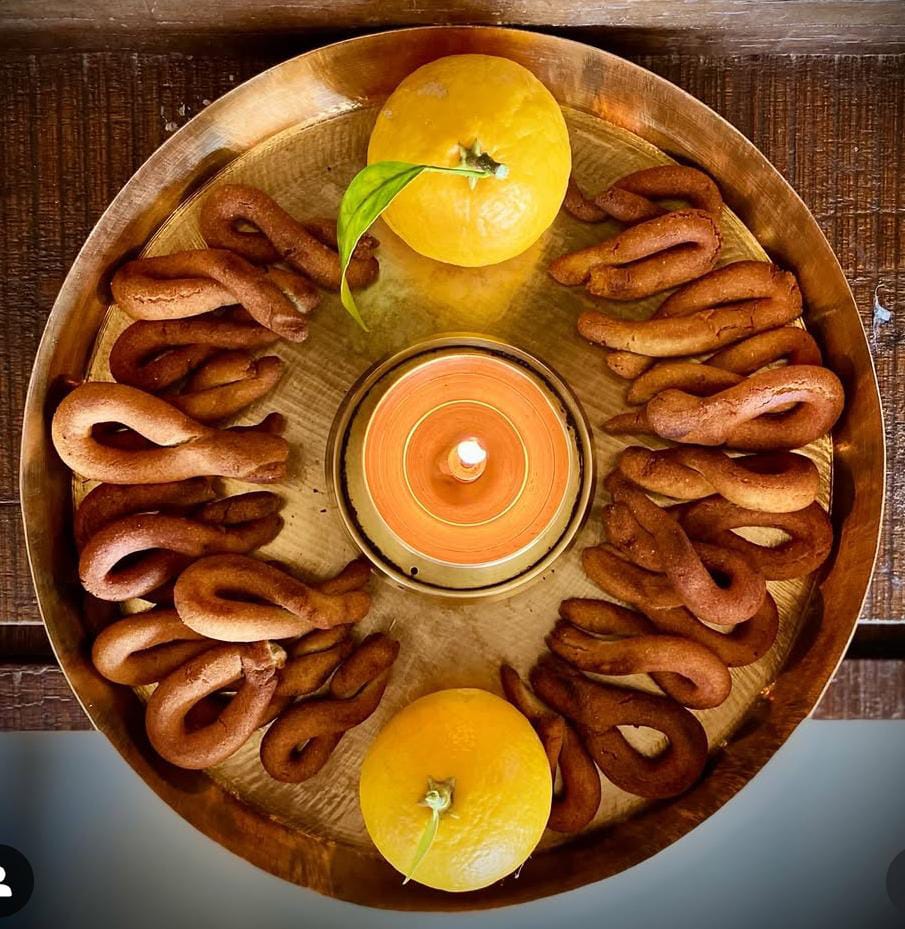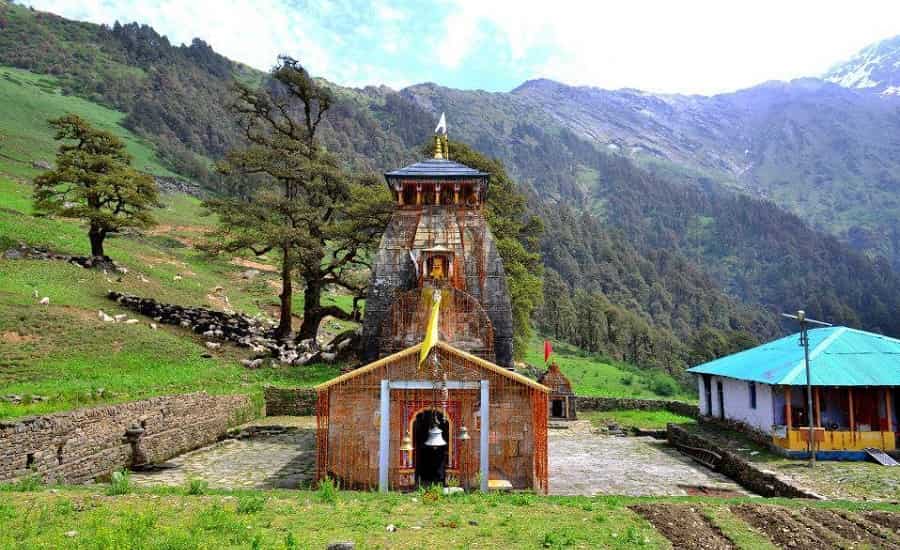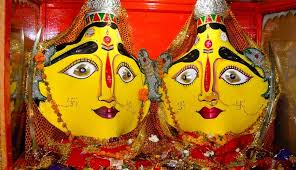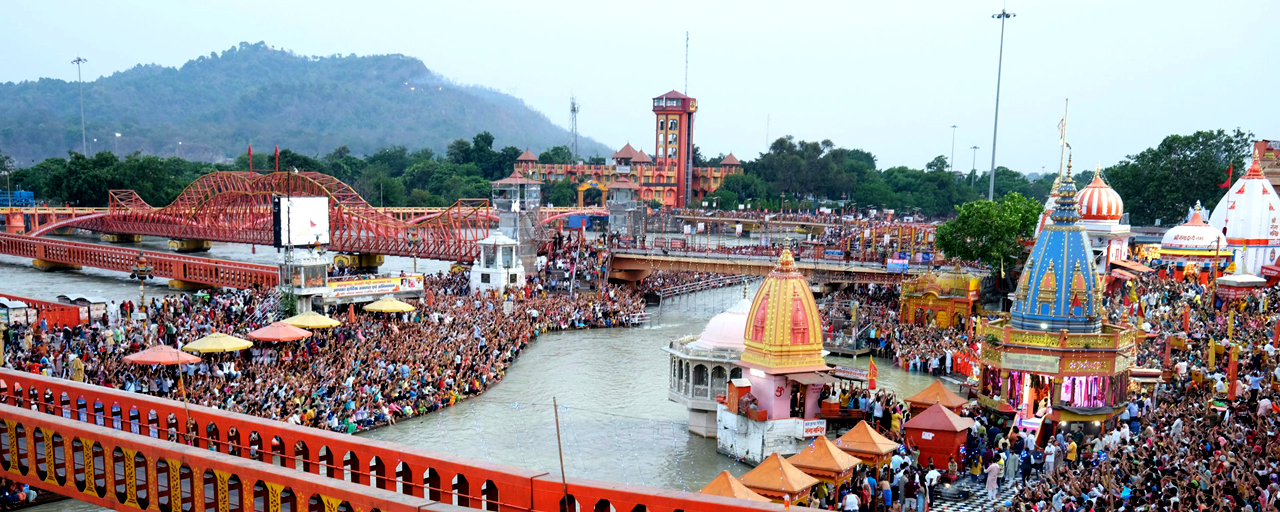In Kumaon, autumn doesn’t just arrive. It is called in, marked with smoke, song, and cattle dressed as if for a wedding. That is Khatarua. Every September, when the rains finally step back and the sky sharpens blue, villages light their fires. You see them from the valley, scattered on the ridges like stars turned upside down.
When the Season Turns
Khatarua falls on the first day of आश्विन (Ashwin). By then, paddy bends heavy in the fields. The ground feels damp but steady after the long monsoon. The nights grow cool. This shift, from wet to crisp, is what the festival holds.
People here will tell you it is also the new year for cattle. Farming is not possible without them, so the first thing done is to honour the animals.
Fire at the Doorstep
As dusk drops, families gather dry wood, twigs, even old cow dung desserts. Fires are lit in front of houses, in open courtyards, at the rims of fields. Children run around them, shouting, their faces lit red. Some dare each other to jump across the smaller flames.
The elders smile, though they say the fire is more than fun. It keeps away भूत-प्रेत (evil spirits), guards the farm animals, and clears the land of horrific strength. Stand still for a moment and you can experience the warmth to your face, smell the mix of smoke and ghee thrown in as providing.
Cattle First
The animals are washed, horns rubbed with गेरू (ochre), and garlands of गेंदा (marigolds) looped around their necks. A lump of गुड़ (jaggery), a pinch of salt, fresh fodder, and small treats for their service through the year.
Children follow them, laughing when a cow shakes its head and flowers fall. For the farmer, it is serious work. Healthy cattle mean healthy fields. Without them, the year cannot move.
Fields and Flames
From the harvest, families take a handful of धान (paddy) or मकई (maize) and throw it into the fire. Grain crackles as it burns. This act is part thanks, part prayer. Fire is seen not only as heat but as a purifier.
Standing around the blaze, neighbours talk, share news of their crops, and watch sparks climb into the dark sky. It feels both ancient and everyday.
Songs in the Night
Around the fires, someone begins a song. Others join, their voices rising unevenly. Lines are often playful, teasing a neighbour, blessing a household, calling for a good harvest. Hands clap in rhythm. Sometimes a ढोल (dhol) beats steadily in the background.
The songs don’t need polish. They carry memory. Children catch the words by listening, and so the verses move from one generation to the next.
Beliefs That Stay
Khatarua is woven with beliefs, each small but alive:
- Fire at the threshold keeps away bad luck.
- Jumping across the flames gives courage and health.
- Bigger the fire, the stronger the guard over cattle.
- Grain offered to the blaze ensures abundance.
- People don’t argue over why. They just do it because that’s how it has always been.
Food Shared
Festivals in the hills are always tied to food. During Khatarua, families make मकई की रोटी (maize roti), serve it with curd, chutney, and jaggery. Some prepare खीर, some fry पकोड़ी (pakodi), passing them around as neighbours drop by.
Eating beside a fire, with smoke in your hair and warmth on your palms, even simple food tastes full.
Why It Matters
In a city, Khatarua may look like nothing. Just small fires, cattle dressed up, people singing old songs. But in Kumaon, it carries weight.
- It honours animals that feed and plough.
- It binds neighbours together at the turn of the season.
- It keeps alive the idea that prosperity is shared, not hoarded.
Even in towns, some families still light a tiny fire at their gate, holding on to the ritual.
If You Happen to See It
Visit Kumaon in September, and you might stumble upon Khatarua without planning. Walk through a village at dusk. Fires will glow. You’ll smell wood smoke, hear laughter, and maybe be offered a piece of jaggery by a child with marigold petals in their hair.
It is not a festival for show. It is lived quietly, around homes and fields, in the rhythm of farming life.
Closing Thought
Khatarua is not grand. It is fires burning small but steadily. It is cattle standing proud in garlands. It is children singing lines older than they are.
When you leave, the flames fade behind you, but the warmth lingers. In Kumaon, autumn doesn’t just arrive with the weather. It arrives with Khatarua, a night of fire, fields, and faith.

